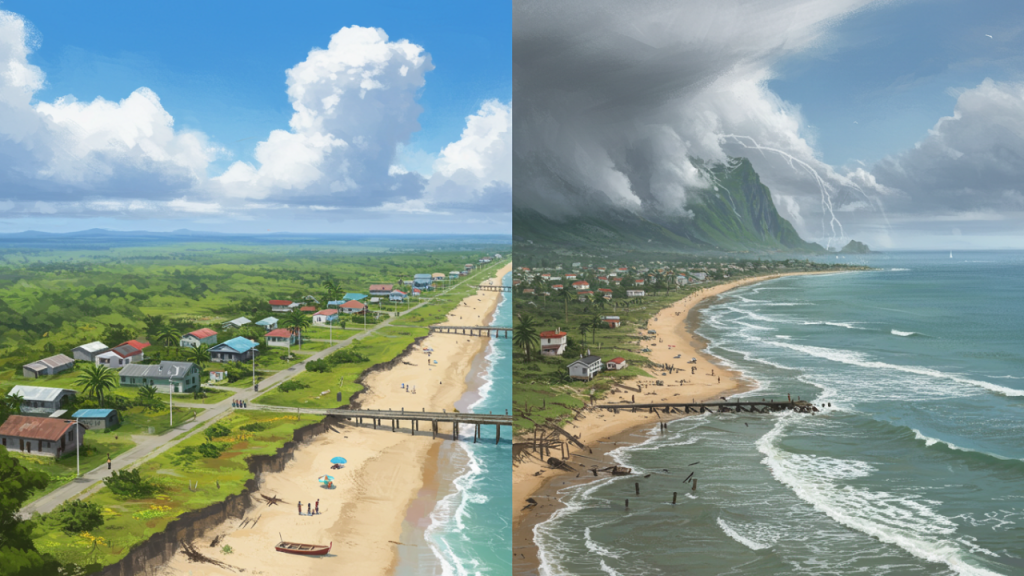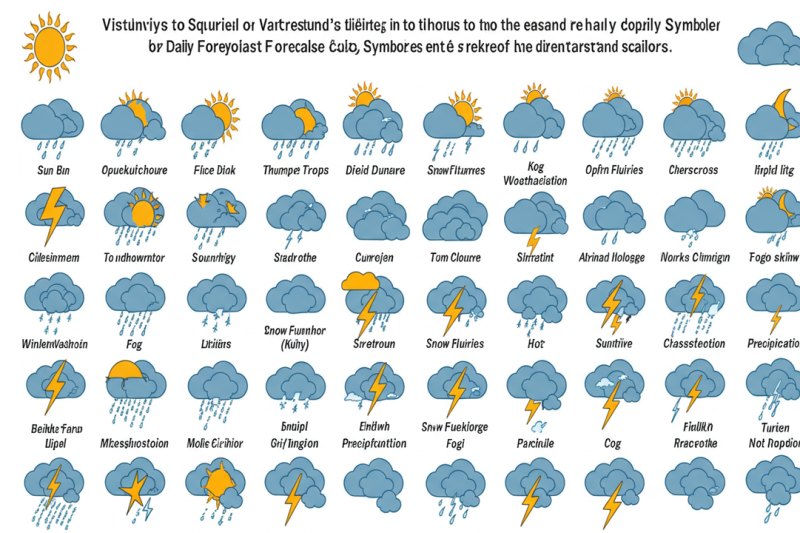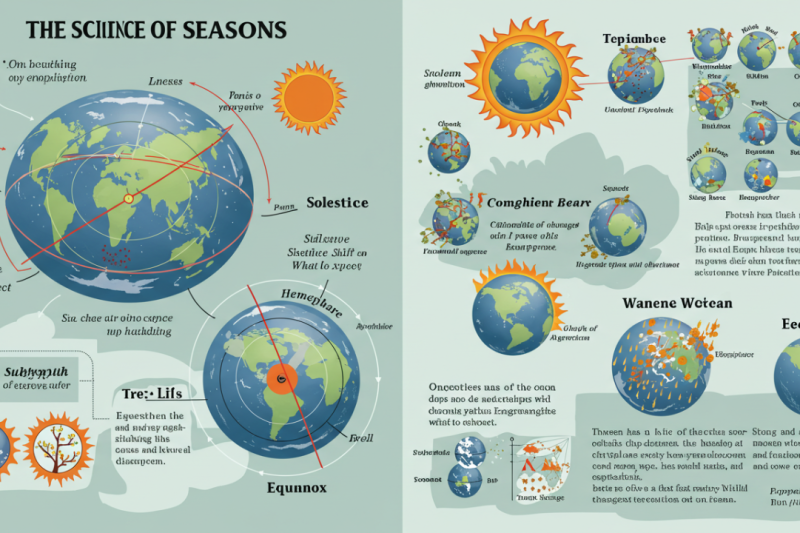Climate change means long-term shifts in global temperatures and weather patterns. It’s caused by humans burning fossil fuels like coal, oil and gas. These gases blanket Earth like a greenhouse, trapping heat energy and warming the planet.
Warmer temperatures threaten human health, cause more severe and frequent extreme weather events, and harm animals and plants. They also affect the frequency of natural disasters, such as hurricanes and wildfires.
Arctic Sea Ice Melting
The Arctic is warming twice as fast as anywhere else on Earth, and its sea ice is melting at a rate of 10% or more each decade. As a result, the Arctic Ocean is becoming less and less reflective of sunlight, eliminating the natural cooling effect that once kept air temperatures near the poles relatively low. This thinning of the polar ice also disrupts normal patterns of ocean circulation and can lead to warmer and wetter weather around the globe.
Aside from global climate changes, a loss of sea ice in the Arctic has local consequences for wildlife and habitats. This includes population declines and behavioral shifts for Arctic species such as ringed seals, harp seals, and polar bears, along with northward migration by non-Arctic marine organisms. In addition, reduced ice coverage has led to a dramatic shift in primary production from sea ice-associated organisms to open water-associated ones. This change is affecting Arctic marine food webs and is driving further climate-related ecosystem changes.
Warmer Arctic temperatures also thaw permafrost zones, which release once-frozen greenhouse gases into the surrounding waters and atmosphere. This releases a significant amount of carbon dioxide into the atmosphere and further contributes to global warming. Finally, a thinner ice cover is more vulnerable to weather events, including storms, which can easily break through it.
These changes are due to human actions since the Industrial Revolution, primarily the burning of fossil fuels. These human activities have led to large amounts of greenhouse gases (including carbon dioxide, methane, and nitrous oxide) rapidly building up in Earth’s atmosphere, which act like a blanket, trapping heat near the surface. As a result, extreme heat waves on land and in the ocean, year-long droughts, years-long flooding, and wildfires are getting more frequent and intense. And this is only the beginning: the more Arctic ice melts, the faster and further climate change will accelerate.
Hurricanes and Tornadoes
Across the globe, extreme weather is becoming more common and more severe. Record-breaking heat waves on land and in the ocean, drenching rains, year-long droughts, massive wildfires and flooding during hurricanes are occurring more frequently and causing greater damage. These events are linked to climate change, which is caused by human activities and the release of greenhouse gases such as carbon dioxide and methane into the atmosphere. These gases act as a blanket, trapping heat and warming the Earth’s air and water. As the planet warms, it alters its water cycle, shifts weather patterns and causes land and sea ice to melt.
Scientists use a combination of historical records and land, air, sea and space-based observations to research how the frequency and intensity of these types of events is changing over time. They look at long-term records to see if the number or severity of these events has risen or fallen in comparison to what was experienced historically and then analyze data from climate models (simulations) to determine how rising global temperatures may be contributing to the increase in those types of events.
The link between climate change and tornadoes is less clear than with other extreme weather events. This is because tornadoes are small and short-lived, so it’s difficult to directly model them in the climate simulations that scientists use to identify trends. However, there is strong evidence that as the world warms and moisture in the atmosphere increases, it provides a better environment for the formation of the thunderstorms that create tornadoes.
Tornadoes form in a band of low pressure called a supercell, and a key ingredient is the availability of moisture. As the atmosphere warms, it can hold more moisture, and this provides the necessary fuel for supercell development. It’s also important for supercells to have a certain amount of atmospheric instability, or wind shear. As the Earth warms, wind shear decreases, which can make it more difficult for supercells to develop.
The number of tornadoes has decreased in the United States, but other trends are emerging. For example, outbreaks of 30 or more tornadoes in one day are increasing and the number of very strong tornadoes has increased.

Heat Waves
The burning of fossil fuels is causing carbon dioxide and other heat-trapping gases to build up in the atmosphere. This warming action, called the greenhouse effect, shifts weather patterns, melts land and sea ice, and makes severe weather more intense. Heat waves, drenching rains, years-long droughts, and floods during hurricanes are all becoming more common and more extreme.
Heat waves are the hottest weather events and are often caused by high temperatures that last two days or more. They can cause serious damage to infrastructure and make living conditions difficult for many people, especially the elderly, those with preexisting health issues or those who lack access to air conditioning. They also can wreak havoc on food security, water availability and basic services in rural communities across the globe.
Recent climate change-related extremes such as wildfires and tropical storms have grabbed the headlines, but heat waves are a growing concern for Americans. Research shows that when people experience the impact of these events, their interest in learning about global warming consistently spikes. And when the effects of a specific weather event, such as a heat wave, are mapped on the Yale Climate Opinion Maps, searches for climate change-related terms rise in the areas affected by that event.
Over the past several decades, it has become common for hotter days to occur more frequently than colder ones in the continental United States. And as climate change continues, the number of hot days is projected to increase even more. The maps below show the projections for the United States based on different levels of average global temperature increase (with the highest scenario shown on the left).
In addition, the frequency of heat streaks—periods of consecutive hot days—is increasing in cities due to climate change. This is exacerbated by the urban heat island effect, where cities with more pavement and buildings are hotter than their surrounding rural areas. Combined with often poor city planning, these factors are making cities more vulnerable to heat-related challenges. This is particularly true in developing countries that are rapidly expanding their urban areas and making them more vulnerable to climate impacts.
Snowfall
Snow is vital to our ecosystem, providing water for wildlife and supporting local economies across the country. But it’s also a major source of carbon storage, and as the climate warms, it is becoming less and less likely to fall.
Two basic conditions are needed to produce snow: freezing temperatures and moisture in the atmosphere. As our atmosphere warms, the chance of snowfall decreases — and the likelihood that moisture in the air will fall as rain instead increases. This is because warmer air holds more water vapor than colder air. Freezing temperatures are also becoming fewer and farther between, thanks to climate change. In addition, the rapid warming of the Arctic could weaken bands of low atmospheric pressure and wind called the polar vortex, which typically lock in cold air over the North Pole. These disruptions would allow icy air to escape south and drop as snow.
Climate Central’s analysis of long-term weather data shows that in 204 locations, average annual snowfall has decreased since 1970. That trend is expected to continue, with more rain and fewer snowfall days as the climate warms.
However, the exact impact of climate change on snowfall is more complex than simple temperature changes. The amount of moisture in the atmosphere, for example, is increasing due to a variety of factors, including a reduction in Arctic sea ice. This could increase the amount of precipitation falling as rain, or it might cause more moisture to be trapped in clouds – leading to more snowfall.
The occurrence of daily snowfall events is decreasing as the climate warms for most of Europe, China, and Japan. At the same time, northern Asia and Greenland are projected to have more frequent snowfall days than historically.
Exactly how much human activity contributes to extreme weather is a subject of intense scientific study. A few years ago, a trio of researchers accomplished something unprecedented: They calculated the specific contribution that human influence made to an individual extreme weather event. The results made headlines around the world. This research is now part of a rapidly growing field of science called “attribution.” Carbon Brief has mapped every published study to date on the topic, from wildfires in California to typhoons in Taiwan.


